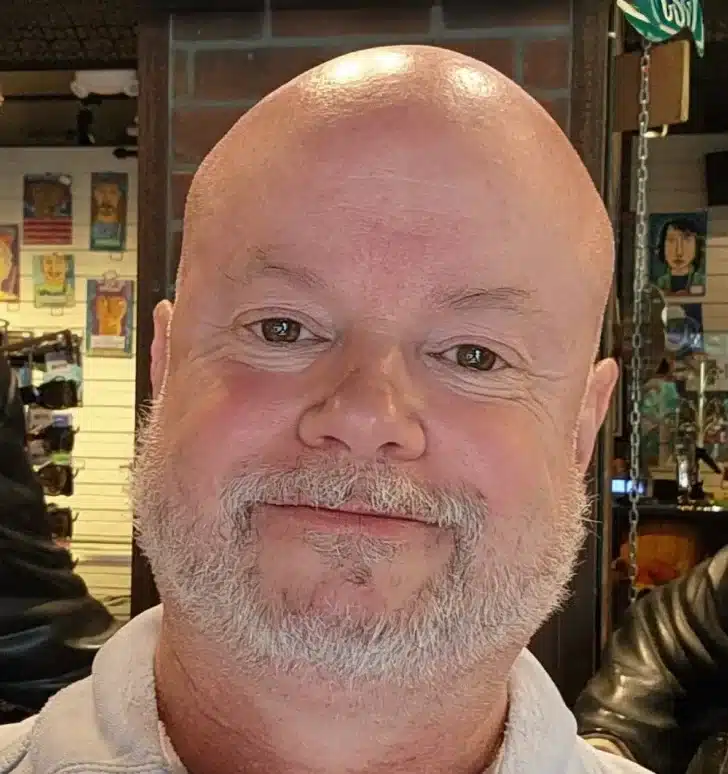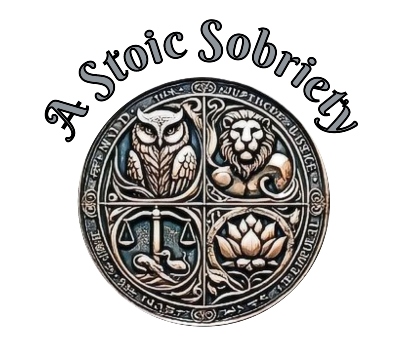AA Step 2: Finding a Higher Power & Stoic Wisdom
Welcome to Step 2 of Alcoholics Anonymous (AA). In Step 1, we admitted our powerlessness over alcohol and that our lives had become unmanageable. The focus of Step 1 was to be honest with ourselves and surrender. Step 2 reads, “We came to be aware that a Power greater than ourselves could restore us to sanity.” Working on this step offers us a path from hopelessness to hope.
This involves removing our ego and believing that a power greater than ourselves will help us achieve and maintain sobriety. A paragraph in Chapter 5 of the AA Big Book describes our actions while drinking as a self-will run riot. As we take this step, we distance ourselves from that self-will and seek external power to restore our sanity.
Stoicism’s teachings emphasize rational thinking, acceptance, and living in harmony with the natural order. We will explore how these teachings can deepen our understanding of how to approach Step 2 with both faith and reason.
What is a Higher Power
A higher power serves as a source of guidance, support, and inspiration for making the changes in our lives required to maintain sobriety. When we struggle, a higher power gives us a source of strength to tap into. We need to find a power greater than ourselves that we can have faith in to restore the sanity we lost in the grips of our ego and self-reliance.
A brilliant part of the 12-step program’s design is that a higher power can be defined in a way that resonates with us. It’s not necessarily tied to a specific religious deity or doctrine. This could be a traditional understanding of God, a spiritual force, nature, the collective wisdom of the AA group, or even a concept like love or goodness. The essence of a Higher Power in AA lies in recognizing something more significant than oneself, a source of strength, guidance, and support that can help us overcome addiction and find lasting recovery.
I have heard many criticisms of 12-step programs emphasizing God or a higher power too much. This makes some uncomfortable as they might associate the program with a traditional organized religion. Here, we will take a deeper dive to dispel those concerns because we have complete control over defining the higher power we choose to assist us in our journey. For example, I have used the group’s collective strength and a general belief that there is some more significant force in the universe than I. Additionally, I have used philosophy as a guiding light in my journey.
Many, without a more profound understanding, automatically dismiss AA as a religious program and use that as a barrier to trying our way of life. The word God automatically raises the defenses of many, and I was included in that group early in my recovery. I needed to dig under the covers and determine if a single word, “God,” would keep me from practicing a program utilized by millions to find a better life.
With deep reflection and the help of the fellowship, it became clear that I could substitute anything I wanted when the word God is used in literature or discussions. For example, in Step 3, I can read and apply it as I decide to turn my will and life over to the care of my AA home group and sponsor. I choose what God means to me as I work on our life-changing program.
If, after studying the flexibility of this step, one is still hung up on AA being a religious program, there may be some deeper resistance to working the program. It is often said that this is not a program for those who need it but for those who want it. The truth is there is room in the program for everyone, including atheists and agnostics. Chapter 4, We Agnostics, in the A.A. Big Book covers this topic well. I suggest a deep study of the chapter for anyone struggling with Step 2.
Practical Guidance for Working Step 2
Once again, Step 2 does not dictate a specific belief system. Instead, it invites us to explore what “greater than ourselves” means in our personal context. Many already have established their higher powers through a religion, other spiritual belief systems, or a philosophy, so everyone may not need this section. Congratulations if you have already chosen a higher power!
Here are some ways to approach this exploration if you are seeking a personal higher power:
1) Reflect on past experiences: Think about moments when you felt connected to something larger than yourself, such as the beauty of nature, the power of love, or the support of others. I quickly recognized the power and strength in the fellowship and chose it as my higher power.
2) Experiment with openness and asking: Even if you feel skeptical, try imagining what a higher power might look like for you. One can sit in a quiet room and ask for help. We do not have to ask anything or anyone specifically. Saying, “I need to find a higher power, and I do not know where to start. I am open-minded, and any guidance would be greatly appreciated.” Planting and tending to this seed can lead you to an answer.
3) Remember, Recovery is a journey. Our thoughts and beliefs change as we grow and learn to live sober. Choosing a higher power does not need to be a one-time, forever decision. We can find something to believe in and lean on in early recovery and not close the door to further exploration and changes in the future.
4) Belief often grows through action: Taking small, intentional steps can help cultivate trust in a Higher Power. One action we can take is to attend meetings regularly. Listening to others’ stories of transformation can inspire hope and reinforce the idea of something greater at work. We might try attending some different religious services to see if anything resonates. Lastly, we have the internet at our fingertips to research anything interesting.
Stoicism and Step 2
First, a little background on the stoics in the context of Step 2. The Stoics were essentially pantheists, believing the divine is built into the universe. They saw God, or the divine, as synonymous with nature and reason, an all-pervading force that governs the cosmos.
They called the divine the “Logos,” a principle of reason and order that guides everything. It wasn’t a personal God with human-like characteristics but more of an intelligent, organizing principle. Marcus Aurelius puts it this way, “Whether the universe is a concourse of atoms, or nature is a system, let this first be established: that I am a part of the whole that is governed by nature; next, that I stand in some intimate connection with other kindred parts.”
That said, the Stoics generally accepted the existence of traditional gods in Greek and Roman culture. However, in the stories of the gods, they often interpreted their meaning to be personifications of natural forces or moral virtues. Ultimately, Stoicism emphasized living following nature and reason. While acknowledging the divine, they focused more on cultivating inner virtue and living a good life rather than worshipping specific deities or adhering to religious rituals.
1) Open Mindedness
Many people struggle with Step 2 because of doubts, fears, or misconceptions about faith. If we spend the time and effort to overcome these barriers with humility and open-mindedness, we can build a strong foundation for recovery. Although I stay sober one day at a time, I need to keep in mind that I want my sobriety to be long-term, and my future self will appreciate the hard work I do today.
Bill W. often reassured skeptics by emphasizing that belief could grow gradually. He said, “Do not let any prejudice you may have against spiritual terms deter you from honestly asking yourself what they mean to you.” Bill encourages us to take small steps toward belief and that there is no need to feel pressured.
Stoicism also values openness to new ideas and regularly challenges our thinking. Marcus Aurelius wrote, “If someone is able to show me that what I think or do is not right, I will happily change, for I seek the truth.” Being open and willing to change one’s perspective is essential for embracing Step 2.
2) Practicing Humility
A core principle of this step is mustering the humility to admit that self-reliance alone is not enough. Humility is not about self-deprecation but about recognizing individual power’s limits. The Twelve Steps and Twelve Traditions (page 56) remind us, “Self-sufficiency was our curse. God had to provide something we lacked.”
Bill W. wrote, “We found that God does not make too hard terms with those who seek Him. To us, the Realm of Spirit is broad, roomy, all inclusive; never exclusive or forbidding to those who earnestly seek. It is open, we believe, to all men.”
The stoics also recognized that to improve as human beings, we need to set our egos aside to make room for growth. Epictetus says, “If you want to improve, be content to be thought foolish and stupid.” Our ego is constantly trying to protect ourselves from danger, and to be thought stupid is seen by the ego as a fatal danger. Pushing past these objections in our minds is critical for us.
3) The Role of the Community
In AA and Stoicism, the community is vital in fostering faith and learning as a path to growth. There may be some exceptions, but everyone in AA shares the commonality of having a higher power of our choosing. Regardless of the higher power we choose, the odds are good that we can find like-minded others in the fellowship.
Whether in AA meetings or personal conversations, we have an outlet to learn and be inspired by the experiences of others. The collective strength we experience often serves as a “Power greater than ourselves” for those new to the program. The added benefit of these interactions is that they reinforce that we are not alone in our need for higher power and have a safe place to share our achievements and struggles with faith.
The Stoics valued shared wisdom and mentorship. Marcus Aurelius frequently reflected on the guidance he received from teachers and friends in his Meditations. He starts his meditations with a list of influential people in his life and lists the virtues of each that he has most benefited from.
Marcus was fortunate to have had many scholarly tutors in his youth, some from different schools of thought and belief systems. They were sometimes at odds in their guidance to the young Marcus, and he had the benefit of seeing multiple paths and eventually chose his own from those experiences.
Conclusion
Step 2 of Alcoholics Anonymous is about opening our minds to the possibility of help, change, and a new way of life. By embracing faith, we can move from chaos to sanity as we begin the recovery journey. Lacking a higher power, we are left with the self-reliance and stinking thinking that kept us in the grips of addiction. Einstein gave us the following gem: “The definition of insanity is doing the same thing over and over and expecting different results.” Change, especially for us with substance abuse disorders, is critical.
The teachings of Stoicism mirror the idea of reliance on a higher power for guidance in our lives, focusing on humility and the importance of aligning with a greater order. As Marcus Aurelius wisely said, “You have power over your mind—not outside events. Realize this, and you will find strength.” Step 2 invites us to find that strength by trusting in a Power greater than ourselves.
Resources
Step 2 – Twelve Steps and Twelve Traditions – PDF Version
Step 2 – Twelve Steps and Twelve Traditions – Audio Version




0 Comments